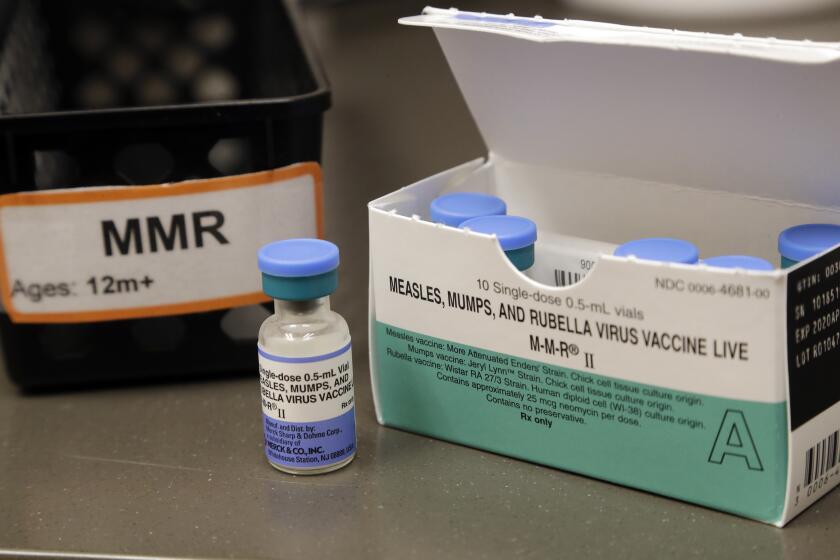Three detectors, two black holes and one really big collision: Gravitational waves found again
- Share via
Scientists have announced the fourth discovery of gravitational waves produced by the collision of two black holes — and it’s the first such smash-up found with the help of the European Virgo detector.
The discovery of GW170814 by both the LIGO and Virgo collaborations, described this week at the G7 science ministers meeting in Turin, Italy, marks a major advance in physicists’ ability to study these powerful phenomena.
“Today marks an exciting milestone in the growing international scientific effort to unlock the extraordinary mysteries of our universe,” France Córdova, director of the National Science Foundation, which funded LIGO, said at the meeting.
Gravitational waves are ripples in the fabric of space-time, caused as objects accelerate or decelerate though space. These ripples, predicted by Albert Einstein, are so difficult to detect that even Einstein doubted that they would be found.
But researchers have now built detectors that can directly observe gravitational waves, particularly those caused by the violent smash-up of a pair of black holes spinning around one another.
This newfound ability to detect them gives scientists a whole new window on the universe — one that allows them to directly observe certain powerful events, including those that don’t emit light and therefore can’t be seen with telescopes.
The twin L-shaped detectors that make up LIGO — short for the Laser Interferometer Gravitational-Wave Observatory — were the first to discover gravitational waves in late 2015. Now Europe’s Virgo detector has joined the fray, picking up its first signal last month.

This short video explains the apparatus that was used to detect gravitational waves passing through the Earth.
The LIGO detector in Livingston, La., was the first to “hear” the Aug. 14 event at 10:30:43 UTC. Its twin detector in Hanford, Wash., picked up the signal 8 milliseconds later, and the Virgo detector near Pisa, Italy, recorded it 6 milliseconds after that.
The signal appears to have come from a pair of black holes sitting about 1.8 billion light-years away — one weighing in at 30.5 solar masses, the other at 25.3 solar masses. The black holes had been spinning around and toward each other, and when they finally collided, they coalesced into one singularity with the mass of 53 suns. The remaining 3 suns or so of mass escaped in the form of gravitational wave energy.
More detail about the event will appear in the journal Physical Review Letters.
The Virgo detection is a welcome addition for LIGO scientists because the more detectors there are, the easier it is to home in on a particular event’s location, Caltech physicist David Reitze, executive director of the LIGO Laboratory, said in an interview.
With all three detectors at work, the scientists were able to point to a patch of sky that’s just 60 square degrees in area — about 19 times smaller than the 1,160-square-degree area identified by the LIGO data alone.
This is important because if astronomers know where the collision happened, they can train other telescopes and detectors on the same area.
Studying those gravitational-wave sources with other instruments will allow scientists to better understand these cosmic events. It’s part of a field known as multi-messenger astronomy.
“These can be studied by both astronomers and astroparticle scientists,” Jo van den Brand, a physicist at Vrije Universiteit Amsterdam and spokesman for the Virgo Collaboration, said at the G7 meeting. “Our ambition is … to open this new field of multi-messenger astronomy, and I think now we have taken the first step in that process.”
Virgo also provides another advantage. Because it’s sitting in a different orientation than the two LIGO detectors, it allows the researchers to better measure the polarization of gravitational waves. This makes it possible for scientists to probe certain aspects of Einstein’s general theory of relativity, which predicts a particular type of polarization from these events.
“It’s the first time we’ve been able to actually resolve these polarizations,” Reitze said. “So that’s quite exciting.”
So far, Reitze said, Einstein’s predictions are holding strong.
“Never bet against Einstein,” he said.
LIGO and Virgo have ended their latest scientific runs and are set to upgrade their systems before coming online again. David Shoemaker, a LIGO Scientific Collaboration spokesperson based at MIT, said at the meeting that the detector network may be able to double its sensitivity levels, which translates to searching a volume of space that’s eight times larger than before.
“There are eight times as many objects in that volume,” Shoemaker pointed out — meaning more chances of finding gravitational-wave sources.
In the future, Reitze said, the collaboration might pick up a gravitational-wave event as often as once a week.
For his part, Van den Brand said he was looking forward to seeing what cosmic phenomena Virgo and LIGO uncover once they each reach their full sensitivities.
“We are just starting, but we are improving rapidly,” Van den Brand said in an interview. “I think it’s up to nature to show us what is happening out there. I am optimistic about the future.”
Follow @aminawrite on Twitter for more science news and “like” Los Angeles Times Science & Health on Facebook.
MORE IN SCIENCE:
Scientists may have found a way to diagnose CTE in football players while they’re still alive
In New York, major crime complaints fell when cops took a break from ‘proactive policing’
Mosquitoes spread deadly diseases, and public health experts hope to fight back with this new emoji
UPDATES:
6:10 p.m.: This article was updated with additional comments from Jo van den Brand.
This article was originally published at 4:45 p.m.




